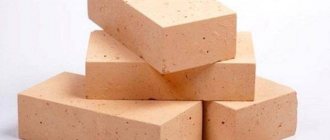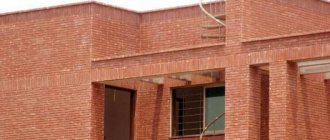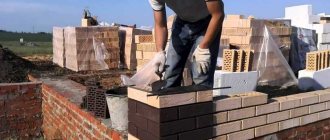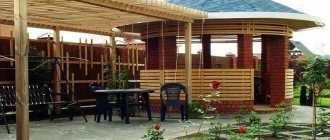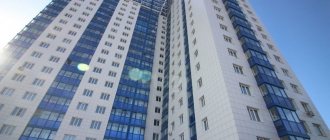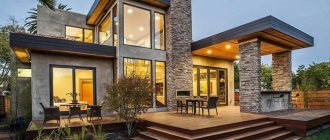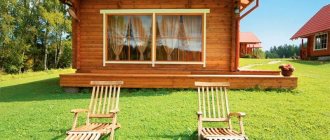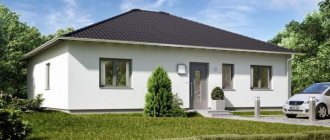How much does it cost to dismantle brick walls?
Prices for dismantling brickwork
| Name of works | Unit change | price, rub. |
| Dismantling a brick wall 1/2 brick thick | m2 | 325 |
| Dismantling a brick wall 1 brick thick | m2 | 420 |
| Dismantling a brick wall 1.5 bricks thick | m2 | 690 |
| Dismantling a brick wall 2 bricks thick | m2 | 850 |
Stamps
In addition to the variety of building materials, you need to pay attention to their brands. The main characteristics are the brand in terms of density and frost resistance.
The density grade shows the strength of the material. If the stove is located in a house or in a bathhouse, a brick with a density grade of 200-250 is suitable. The above indicator is completely unnecessary, since then kindling will take too much time.
Frost resistance must be taken into account when constructing a chimney, as well as if you are building an outdoor barbecue oven. The frost resistance grade shows how the stone absorbs and releases moisture. For pipes and street buildings, you need to choose the most frost-resistant brands.
The most common manufacturers
There are many factories producing bricks in Russia and neighboring countries. The most common types for laying stoves are:
"Borovichi". Produced at the plant of the same name in Nizhny Novgorod. Frost resistance is high, density 250.
"Vitebsk workshop". Produced in Belarus. Density 200, but frost resistance is very low. They can be used to line stoves indoors; such stone is not suitable for pipes.
“Chamotte.” It is produced by various enterprises, for example, the Belokamensky plant in Ukraine, the Sukholozhsky plant in Perm.
It is recommended to use in the construction of those parts of the furnace that directly touch the flame.
How much does it cost to dismantle walls in an apartment?
Prices for dismantling work (2018)
| Name | Unit. | Price |
| Breaking down 1/2 brick partitions | sq.m. | 300 rub. |
| Breaking down partitions into 1 brick | sq.m. | 390 rub. |
| Demolition of walls made of reinforced gypsum, aceite, foam block, gypsum block | sq.m. | 350 rub. |
| Demolition of concrete walls (interior partitions up to 8 cm thick) | sq.m. | 1100 rub. |
What materials are suitable for the construction of stoves?
First of all this:
- fireclay brick;
- red fireproof;
- alumina heat-resistant;
- clinker.
These materials are solid, they do not deform from heat, do not break - a stove made from such materials will last for many years.
You cannot build stoves from:
- hollow stones;
- silicate materials;
- slotted bricks.
The listed types of materials are not heat-resistant, quickly break down when heated frequently, become deformed, and do not retain heat.
Important: the stove can only be laid out of solid stone! Hollow ones are not able to withstand high temperature loads.
Types of gazebos
The shape and design in plan can be varied.
- The rotunda is a round-shaped gazebo, of the open type. Walls are usually not made. Along the perimeter of the circle, columns are installed that support the roof. A special case of a rotunda is a hexagonal gazebo.
- A pavilion is a gazebo usually square or rectangular in shape. Can be closed, semi-closed or open.
- Belvedere is a type of gazebo created for viewing the surrounding area. Belvedere is rarely built as a separate building. More often it is part of a building. For example, on the roof.
Facing
Separately, it is worth mentioning the facing brick, which with equal success resists both water and increased temperature. The specific heat capacity of this material is at the level of 0.88 kJ/(kg K), with a density of up to 2700 kg/m3. Facing bricks are available for sale in a wide variety of shades. They are suitable for both cladding and laying.
What is SIP
The technology of erecting buildings based on a ready-made frame appeared in the West quite a long time ago. Frame houses have been built in Canada and America for centuries. Despite the obvious simplicity of construction, the buildings are warm, beautiful and modern.
A SIP panel is a sandwich of OSB board and insulation. OSB board consists of wood chips that are parallel to the plane of the sheet and connected using various resins. Formaldehydes, which are toxic to humans and are typical for the production of chipboards, are not used in the production of OSB boards. Oriented strand board OSB is made from sawmill waste and has many advantages:
- Low cost.
- The strength of OSB is higher than that of fiberboard and chipboard.
- OSB board holds screws, screws and other types of fasteners better than chipboard.
- The material is easily cut using a chainsaw or hacksaw.
- The plate can be easily painted with any paint and varnished. The applied coating will last for many years without changes.
There are different types of OSB boards. When ordering SIP panels, we recommend that you specify what type of oriented strand sheets are used. Our priority is the Eco and Green varieties, which do not contain formaldehyde. Also check the OSB’s moisture resistance ratings—to build a house, you should choose the most hydrophobic option.
Panel characteristics
This type of building materials is chosen for private housing construction due to the optimal combination of price and quality. The performance indicators speak for themselves:
- The weight of one square meter of slab together with insulation is about 20 kg. Due to the low mass during construction, you can save on the foundation and not use heavy equipment during construction.
- To install a SIP board, just fix it between the frame elements and seal the cracks with polyurethane foam. The process of assembling a small one-story house with an attic under such conditions takes 20–30 days.
- With a thickness of 170 mm, the SIP panel provides thermal insulation sufficient for the construction of a residential building in the Central region of Russia. For the construction of houses in Siberia (the average winter temperature is 35 degrees below zero), panels with a thickness of 220 mm (with an OSB thickness of 10 cm) and 224 mm (with an OSB thickness of 12 cm) are suitable.
- If necessary, the slab can be cut into parts of the desired shape and size using a regular chainsaw, like drywall. This simplifies construction and reduces the cost of the building.
- You can build Canadian houses from SIP panels all year round. The only limitation is that you can foam the gaps between the panels and the frame at a temperature not lower than 10 degrees below zero, otherwise the thermal insulation properties of the foam will sharply decrease.
Before deciding to build, you should familiarize yourself with the properties of the material. Usually the composition includes artificial insulation made of polystyrene foam or polyurethane foam. The foam plastic used in the sandwich boards is not biodegradable. Another nuance is that to ensure a high level of fire safety in buildings, OSB boards are treated with fire retardants in production. The level of safety with such processing is much higher than in a building made of logs or timber. Therefore, rumors about flammability are greatly exaggerated.
Sip panels with polystyrene
The top and bottom layers in sandwiches are most often made of OSB, and different materials are used as insulation. The most popular insulation is made of polystyrene foam. It should not be confused with polystyrene foam: these are different materials, and the differences between them are quite significant. Polystyrene foam is produced by exposing polystyrene granules to steam. As a result, the granules stick together and form a single whole. However, when moisture gets on the foam, the material breaks up into separate granules, since gluing occurs only on the surface of the balls. Therefore, high humidity is detrimental to polystyrene foam.
Expanded polystyrene is produced by extrusion: polystyrene balls are melted until a homogeneous mass is obtained, then the polystyrene is treated with steam. The result is a homogeneous material that is impervious to moisture. The level of water absorption of polystyrene foam is 0.4% per month. For polystyrene foam this figure is 10 times higher. The strength of expanded polystyrene is 5 times higher than that of polystyrene foam. Due to the absence of micropores, polystyrene foam is invulnerable to water, does not allow vapor to pass through and does not absorb volatile substances. Panels with expanded polystyrene are the most popular due to the optimal combination of price and quality.
From OSB from polyurethane foam
Polyurethane foam, or PPU, is the second most popular material. It is more expensive than polystyrene foam, which is reflected in the cost. The minimum service life of polyurethane foam is 50 years - and this is an excellent indicator for a house built in a month. The energy efficiency of polyurethane foam compared to expanded polystyrene is about 20%. High heat saving rates are achieved due to the peculiarities of sandwich production. The material is not glued to OSB boards with an adhesive composition - adhesion of PU foam to the surface of the board occurs during the manufacturing process of the sandwich.
Polyurethane foam has a number of advantages:
- Increased impact resistance, resistance to high mechanical loads. The thickness of a floor slab with polyurethane foam will be less than a similar slab with polystyrene foam.
- Due to the elasticity of polyurethane foam, it is possible to produce curved panels for the implementation of small forms in architecture.
- The material is suitable for use under severe temperature conditions. The lower limit of normal is -50 degrees, the upper limit is +80 degrees Celsius.
- PU foam does not lose elasticity at low temperatures and does not become brittle.
- It does not support the proliferation of mold fungi, since it does not create an environment suitable for the life of parasitic microorganisms.
- Ensures fire safety of the building.
If you are planning to build a house with several floors, or you are going to build a building in a region with sudden changes in temperature and humidity, you should choose construction from panels with polyurethane foam.
From OSB and mineral wool
Mineral wool is the best option in warm regions where heat is common. This thermal insulation material has an NG certificate. This means that mineral wool meets the standard of non-combustible building materials. Material specifications:
- Compressive strength - 110 kPa.
- Density up to 125 kg/m3.
The only drawback of mineral wool is its tendency to shrink under the influence of directed loads (creasability). But this insulation has a high sound insulation rate, which is important when building housing near a highway and in other noisy places.
Made from fiberboard and polyurethane foam
As an alternative to the traditional OSB board, fiberboard is used to produce high-strength sandwich panels. The basis of a fiberboard board is wood “wool” - a fiber that occupies about 60% of the total volume of the raw material. Portland cement is used as a binding component, which forms a strong and load-resistant structure. To strengthen the internal skeleton of the slab, a small amount of mineralizer is added to the material.
To insulate slabs with fiberboard, polyurethane foam is most often used. This material is the most versatile and heavy-duty resistant of all insulation options for Canadian homes. SIP panels made of fiberboard and polyurethane foam are recommended for use in places with increased load: on floor slabs, load-bearing structures and for the construction of houses with 2 or more floors.
Organization of work
Saving on design documentation entails an incorrect estimate of the cost of building a house. The customer often underestimates his strength and interrupts financing due to lack of funds. And an unfinished house, as you know, needs competent conservation, which is also expensive. Without it, if construction is stopped for more than six months, there is a high risk of completely or partially losing the results of work already completed due to the negative impact of adverse weather conditions on structural elements.
Consultations from highly specialized specialists, as well as technical supervision or construction control services, will help you save wisely on building a house without losing quality.
A wide range of lightweight concrete blocks at the Moscow ZhBI-4 plant
Full-fledged production of wall blocks with careful incoming quality control of raw materials and finished products for enterprises and individual developers conducting construction work in Moscow and the Moscow region has been established at the capital's ZhBI-4 plant.
We produce blocks that can be used for laying external walls and partitions made of expanded clay, gas and foam concrete, as well as hollow, solid and moisture-resistant tongue-and-groove partitions.
A wide range, favorable prices for wall blocks, and the ability to order delivery of purchased products directly to the construction site using the manufacturer’s transport make the designs of the Moscow ZhBI-4 plant very popular.
Colors and techniques: a word from designers
Zina Broyan and Inna Tejoeva: “Color blocking is a trend that is quickly gaining popularity. Accent walls, a color transition from the wall to the ceiling, an accent floor using self-leveling flooring or microcement in an interesting shade - all this erases the boundaries of space and changes the geometry of the room. We often use these techniques to focus attention on a specific place and combine zones in a room.
We recommend choosing complex, cool colors. Especially shades of blue, which harmonize perfectly with the texture and natural wood. It is better to select as follows: light walls - dark floor (for example, wenge), medium saturation or dark walls - light floor (natural oak).”
Olga Kosyreva : “Pastel colors are now everywhere, even in office furniture, so it’s obvious that they will soon be replaced by others. I can even guess which ones: complex natural colors, colors of earth, stone, forest, river and lake water, colors of corroded metals and naturally aged materials.”
A combination of gray and pink and an ombre effect are also sent to sidings.
Inna Usubyan: “If we talk about interior fashion on a global scale, then blue is definitely in trend. Various shades of rich blue - from Royal English to indigo - are present in the most fashionable interiors created this year around the world.”
Alexandra Fedorova: “Another American theme is very popular now - high doors with a square cut.
They are inserted into almost any interior - from classic to modern. At first it’s catchy, but after the twentieth such interior you begin to understand that this is already too much and soon everyone will get tired of the reception. The same can be said about the black “outline” - a fashionable edging of furniture parts or room contours with thin black lines.”
Experts named the most cost-effective alternatives to wood for individual housing construction
The Open Village company, the organizer of the exhibition of suburban construction technologies, conducted a survey of top managers of Russian industry companies to assess the increase in the cost of building materials for individual housing construction (IHC) - analogues of more expensive wood (the survey materials are in the editorial office).
The survey revealed the top 5 inexpensive materials that experts recommend considering as an alternative to wood and lumber, which have more than tripled in price over the year, to reduce the overall cost of construction.
The study was conducted in June 2021 in the form of an expert survey of top managers of companies participating in the suburban construction market, suppliers of house kits and construction companies: Ytong, Dr. Schiefer, Baumit, Bor Stroy, BAUHAUS, Balashovskie Doma, DOMIX, Object-A, GOOD WOOD, VDK NN, Nordic Wood and Grand Line. The study participants shared their own statistics on the dynamics of prices for building materials and gave examples of those that could best replace increasingly expensive wood and lumber when building a house.
Context
Prices for lumber for building houses have tripled over the year. Following this, the cost of wooden house kits increased proportionally, and finished houses also became more expensive - by about 35% per year. If at the end of 2021 a cube of 12-meter first-grade board cost 28 thousand rubles, then six months later it will be 45–50 thousand rubles. Glued laminated timber is also breaking records in terms of cost growth. At the end of 2020, its purchase price was 33–35 thousand rubles. per cubic meter, now - from 65 thousand rubles.
According to survey participants, artificial materials have the greatest prospects in the low-rise construction market. For example, fiber cement panels that imitate the surface of wood or stone, and wood-polymer composites, which are not yet in high demand among consumers.
How to choose a brick for a stove in a bathhouse
We offer a combined option: lay out the firebox from refractory ceramic, the accompanying cladding is made from simple red, but always first-class.
Keep in mind that quartz or fireclay are not suitable here, since they begin to collapse at a humidity of 60%, and its level in the steam room is usually higher. Clinker with its heat dissipation will be a good option, but relatively expensive, so its use is only advisable when arranging small rooms.
Visual inspection
Before purchasing please make sure that:
- the geometry of each piece is precisely maintained, with deviations of no more than 2 mm;
- when gently tapped with a hammer, a slight ringing sound is heard - this is a characteristic sign of the absence of cracks;
- The color of the cut is uniform, there is no crumbling.
Marking
Any batch made receives an alphanumeric code containing the following useful information:
- Name;
- type – L – front, R – ordinary;
- dimensions;
- margin of safety;
- level of frost resistance;
- average density indicator;
- GOST release.
Size
The following tables will help you understand what brand of brick is needed for laying a stove.
Domestic manufacturers
| Name | Designation | Marking | Dimensions |
| Single | ABOUT | 1-NF | 250x120x65 |
| Modular | M | 1,3-NF | 288x138x65 |
| Euro | E | 0.7NF | 250x85x65 |
| One and a half | U | 1.4NF | 250x120x88 |
| Thickened with voids | ISIS | 1.4NF | 250x120x88 |
| Double (stone) | TO | 1.8NF 2.1NF 2.9NF 3.2NF 3.7NF 4.5NF | 288x138x88 250x120x140 288x138x140 250x180x140 288x288x88 250x250x140 |
| Large format ceramic | QC | 4.9NF 6.0NF 6.8NF 9.3NF 10.7NF 11.2NF 14.3NF | 380x180x140 250x250x188 380x250x140 380x255x188 380x250x219 398x250x219 510x250x219 |
| With horizontal voids | KG | 1.8NF | 250x200x70 |
European manufacturers
| Marking | Dimensions, mm |
| NF | 240x115x71 |
| DF | 240x115x52 |
| 2DF | 240x115x113 |
| W.F. | 210x100x50 |
| WDF | 210x100x65 |
| RF | 210x115x61 |
Form
As an example, let’s take the most common option – ceramic bricks for stoves. It is a regular parallelepiped with sides, each of which has its own name: the largest is the bed, the middle (side) is the spoon, the smallest (end) is the poke.
Color
Depends on the type of piece product. Fired clay attracts with its thick red-brown tint, which is attractive in itself and does not require additional finishing. Fireclay is creamy yellow, not so interesting in appearance, so it is better to cover an element made from it with something more impressive, for example, tiles.
The silicate and hyper-pressed options are ready to amaze with the variety of palettes and even textures, but we have already found out that they are not suitable for structures that experience heating.
The main thing is that the color is uniform, including on the cut or break line. Lighter or darker spots on the edges or in the thickness indicate poor firing quality, and therefore insufficient strength.
Let's sum it up
So, which brick is better for the stove? To build a high-quality stove, you need to choose the right brick. It should be:
- Full-bodied.
- High Quality.
- Refractory.
- Density grade 200 – 250.
- Possess high frost resistance.
- Comply with GOST.
One final piece of advice: always buy enough bricks to avoid a situation where there is not enough building materials. It is not recommended to purchase additional bricks later, since stones from different batches may differ in color and quality.
Watch the video: “Which brick to choose”
Price
The price of a stove brick consists of a number of parameters, such as, first of all, the size of the stove brick , the complexity of its shape and, of course, whether it belongs to a certain variety. The manufacturer is not particularly important for pricing; there is no particular difference in prices for products from different factories; cost differences are completely insignificant even for large wholesale purchases.
On average, the price breakdown looks like this:
- ceramic heat-resistant facing brick (standard form) - from 8 to 14 rubles per piece;
- fireclay brick (standard form) depending on the brand - from 36 rubles and more per piece;
- basic refractory brick (standard) - from 22 rubles per piece.
As for purchases directly from manufacturers, the average minimum batch is 400 bricks, while, for example, fireclay “Sha-5” will cost from 19 rubles per piece. When purchasing from a factory, one rule applies - the larger the batch, the lower the price.
As for delivery, this point should be clarified, since at many enterprises pick-up is implied, it is also necessary to discuss the moment of unloading the delivered bricks, since quite often there is no question of any “loaders” or built-in mini cranes in the delivery service offered by the plant . This significantly increases costs and makes the purchase quite comparable to purchasing the material in a store.
Why is Penoplex’s ability to replace brick so useful?
Now you know what wall thickness Penoplex replaces. What follows from this? Yes, you can free up a lot of space in your house. The high insulating properties of expanded polystyrene sharply reduce the thickness of thermal insulation, which is why the material is popular in insulating facades and ceilings, roofs of private houses and large shopping centers.
The news about how much brick Penoplex replaces will help residents of apartments and houses who have been suffering for years in corner apartments or in housing on the top floors. You can simply order Penoplex in small quantities, deliver it to your home, and install the insulation yourself. Thus, the savings amount to 40% of the cost of thermal insulation.
For professional builders and large developers, information about how much Penoplex replaces brickwork makes it easier to calculate the reliability of structures and buildings, reduces labor costs for construction, and at the same time reduces the cost of construction.
Moreover, insulation allows you to build houses without using masonry material for walls. The walls of frame buildings consist of insulation and cladding outside and inside. Watch the video on how you can additionally insulate an old frame house with Penoplex materials.
